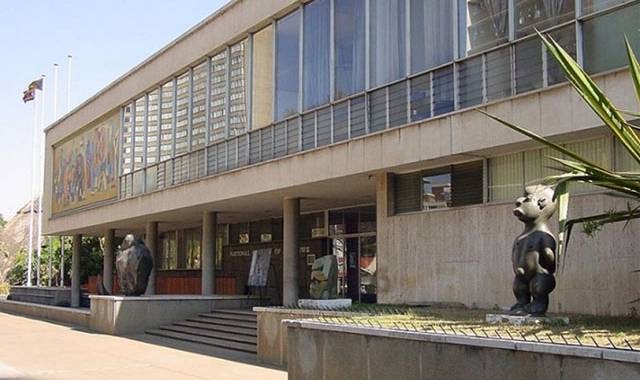Zim meets Italy at national gallery

At the Gallery
The return of three Old Master Paintings to the Permanent Collection of the National Gallery of Zimbabwe marks a momentous occasion in the Gallery’s history. The three paintings are periodically dated from the Late Renaissance to the Baroque. These three artworks are of the zenithal degree and have been an integral part of the National Gallery of Zimbabwe’s Permanent Collection’s lineament of Global Art History.
Two Old Masters form the core of this debarkation; Andrea Piazza, also known as Cavaliere, died in 1670, his date of birth is unknown. His work, according to the frame of time he practiced within, is considerably of the Baroque period. Piazza largely documented events in his paintings, from marriages to court visits, his subject matter often dwelt on events depicting large groups in an opulent demeanor. The other artist, Paolo Veronese, also known as Caliari, was born in 1528 and died in 1588. His work was largely centered on Mythology and Religion, often compared to Titian for his colorist connotations and focus on naturalist painting technique.
The return of these three artworks back into the National Gallery of Zimbabwe’s Permanent Collection has a basis of association between a triumvirate of institutions with a common Patron. The benefactor at the center of is Sir Stephen Courtauld; soldier, philanthropist and heir of the English wealthy Courtauld family of textile industrialists. Sir Courtauld directed his interests to the advancement of the Arts, not only in the United Kingdom, but all over the world!
Sir Courtauld was born in 1883 and passed on in 1967; throughout the span of his life, as his family before him, he led a life that was inarguably non- conformist and his pursuit for social justice can be seen at his residence La Rochelle in Penhalonga. A window at the manor has inscribed within it, the names and signatures of scores of revolutionaries who sought abode in the chateau, en route to Mozambique during the Second Chimurenga. Arguably, being a military man himself, bequeathing wealth and artwork to what was then the National Gallery of Rhodesia; one marvels at the man’s nobility in his dichotomous support of needs of all within that body politic that was all embracing to cultural diversity!
On that basis thereof, Sir Courtauld was a keystone in the establishment of the National Gallery of Zimbabwe. Throughout the inception process, the opening and the development of the institution, Sir Courtauld applied great fervour to the functionality of the organization to such a degree he was appointed the Chairman Emeritus until the time of his passing. It is important to point out the sentiments of his Will; all beneficiary institutions were to freely distribute artworks between themselves for the enjoyment and enrichment of the cultural lives of the Public wherever he donated artworks.
Enter Eltham Palace; a Tudorian mansion repurposed to Modernist tastes by Sir and Lady Virginia Courtauld in the 1930s, a reference to the previously mentioned angle. The palace is located in the London borough of Greenwich, and is administered by a non- departmental body known as English Heritage. The latter is a charity that manages and conserves over 400 historic buildings and sites in the United Kingdom.
Eltham Palace was the childhood home of King Henry VIII of Tudor, hence dating the construction of the building as far back as the 15th Century. The palace features an Entrance Hall, an Italian Drawing Room, a Great Hall and Gardens. The three paintings in discussion had been hung on the walls of the Italian Drawing Room for the 20 years they had been loaned out by the National Gallery of Zimbabwe, thematically cohering to the eloquence of the space, evoking Renaissance zeal to the mise en scène in which they were housed.
The Palace has become a space synonymous with special occasions such as weddings; wherein Piazza’s The King of Poland being received by the Doge of Venice could be contextually pertinent, the waterscape of the middleground festooned by gondolas navigating the Grand Canal as they shift towards the eye to dock before reception by the court and High Society of Venice. The linear perspective of the composition shifts the eye towards the vanishing point, where atop the Saints watch the events unwrapping below with approval, the veneer in this section establishing the painter’s exquisite application of chiaroscuro wherein the darker tones of the foreground express the aggregation’s earthiness and mortality.
Veronese on the other hand executed two naturalized portraits implicitly centered upon figures; the first is Astronomer wherein a draped man reclines with astrolabe in hand. The countenance on his face bears intrinsic thought and contemplation as a man of that station was classically entailed. The dark and light tones of the composition are rich and the warm colour is radiant, with the texture of the natural distinctly standing apart from the drapery, sharply creased and filling the eye pleasingly with its voluminous appearance.








Comments